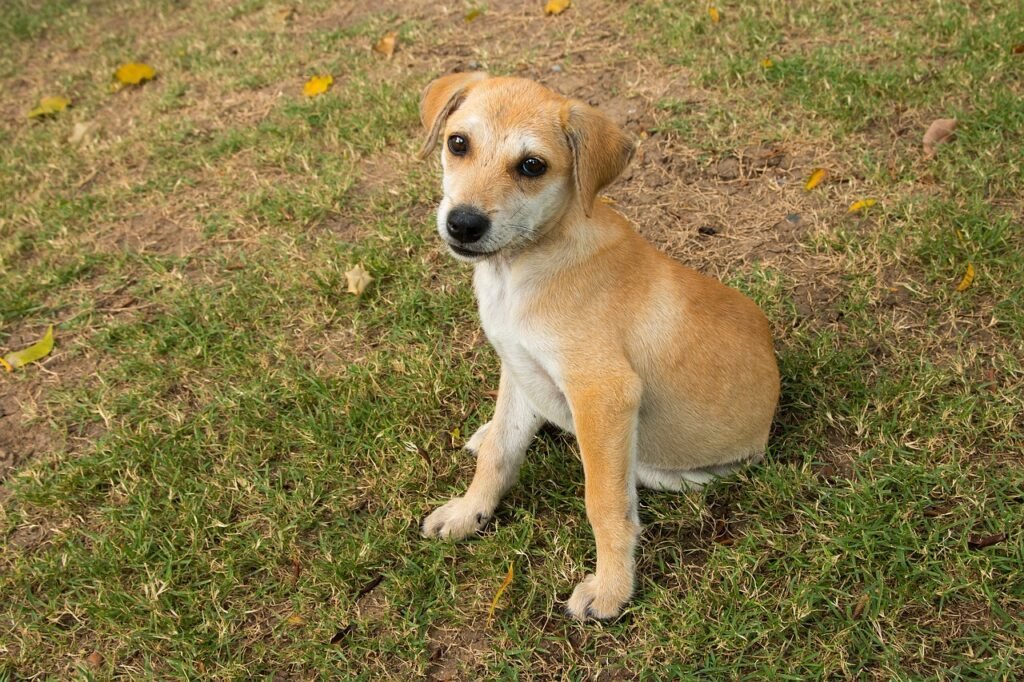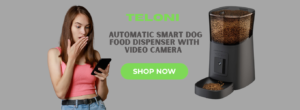
Puppy biting is a common behavior problem that many new puppy owners face. It can be frustrating and even painful when your puppy constantly bites and nips at you. However, with the right understanding and training techniques, you can effectively stop your puppy from biting. In this article, we will explore the reasons why puppies bite, the different types of puppy biting, and when puppy biting becomes a problem. We will also discuss the concept of bite inhibition and how to teach it to your puppy. Additionally, we will cover techniques for redirecting and distracting your puppy’s biting behavior using toys, treats, and positive reinforcement. By following these tips, you can create a well-behaved and bite-free puppy.
Key Takeaways
- Understanding why puppies bite is important for addressing the behavior.
- Teaching bite inhibition is crucial to prevent your puppy from causing harm.
- Avoid using punishment or harsh methods to stop your puppy from biting.
- Redirecting your puppy’s attention to appropriate toys and treats can help curb biting.
- Consistent positive reinforcement is essential for successful puppy training.
Understanding Puppy Biting Behavior
Why Do Puppies Bite?
Puppies bite for several reasons, and it’s important to understand their motivations. Teething is a common cause of biting, as puppies explore the world with their mouths. They may also bite during play as a way to interact and establish dominance. Additionally, puppies may bite when they are feeling anxious or afraid. Understanding why puppies bite can help you address the behavior effectively.
- Teething
- Play and social interaction
- Anxiety and fear
Tip: Provide appropriate chew toys for your puppy to redirect their biting behavior and alleviate teething discomfort.
The Different Types of Puppy Biting
Puppies may exhibit different types of biting behavior as they explore their environment and interact with others. Understanding these types can help you address the issue effectively:
Play Biting: Puppies often engage in play biting as a way to interact and learn. It is usually gentle and accompanied by wagging tails and relaxed body language.
Teething Biting: During the teething stage, puppies may experience discomfort and chew on objects to relieve it. This biting is often accompanied by chewing and gnawing.
Fear Biting: Puppies may resort to biting when they feel threatened or scared. This type of biting is usually defensive and may be accompanied by growling or cowering.
Aggressive Biting: In some cases, puppies may display aggressive biting behavior, which is characterized by intense and forceful bites. This type of biting should be addressed promptly to prevent future issues.
Understanding the type of biting behavior your puppy exhibits can help you tailor your training approach and address the issue effectively.
When Does Puppy Biting Become a Problem?
Puppy biting is a natural behavior for young dogs as they explore their environment and learn about their surroundings. However, it becomes a problem when the biting becomes aggressive or causes harm to people or other animals. It is important to address this behavior early on to prevent it from escalating into a more serious issue. Here are some signs that puppy biting may be becoming a problem:
- Intense biting: If your puppy bites with a lot of force and doesn’t respond to gentle correction, it may be a sign of a problem.
- Inability to control biting: If your puppy consistently bites even after you have tried various training techniques, it may indicate a need for further intervention.
- Fear or aggression: If your puppy shows signs of fear or aggression while biting, such as growling or snarling, it is important to seek professional help.
Remember, addressing puppy biting early on can help prevent future behavior problems and ensure a happy and well-behaved dog.
Teaching Bite Inhibition
What is Bite Inhibition?
Bite inhibition is a crucial skill for puppies to learn. It refers to their ability to control the force of their bite, so they can play and interact with others without causing harm. Teaching bite inhibition is important because it sets the foundation for proper socialization and prevents future behavior problems. Here are some key points to remember:
- Start teaching bite inhibition from a young age, ideally when your puppy is still with their littermates.
- Use gentle feedback, such as a yelp or a brief withdrawal of attention, to teach your puppy that biting too hard is not acceptable.
- Gradually increase the level of feedback as your puppy learns, so they understand the difference between a gentle play bite and a bite that causes discomfort.
Remember, consistency and patience are key when teaching bite inhibition. By helping your puppy develop this skill, you are setting them up for a lifetime of safe and enjoyable interactions with others.
How to Teach Bite Inhibition to Your Puppy
Teaching bite inhibition is an important part of training your puppy to have a soft mouth and control the force of their bites. It helps them understand that biting too hard can cause pain and discomfort. Here are some tips to help you teach bite inhibition:
- Start by using a gentle, high-pitched voice to let your puppy know when their bites are too hard.
- If your puppy continues to bite too hard, you can yelp or make a loud noise to startle them. This mimics how their littermates would react if they were bitten too hard.
- When your puppy bites softly or stops biting, reward them with praise and a treat.
- Be consistent with your training and reinforce the message that gentle bites are rewarded.
Remember, teaching bite inhibition takes time and patience. It’s important to be consistent and provide positive reinforcement to help your puppy learn.
Common Mistakes to Avoid
When teaching bite inhibition to your puppy, it’s important to avoid some common mistakes that can hinder their progress:
- Using punishment: Punishing your puppy for biting can create fear and anxiety, which may worsen their biting behavior.
- Inconsistency: Inconsistently enforcing bite inhibition rules can confuse your puppy and make it harder for them to learn.
- Ignoring the problem: Ignoring your puppy’s biting behavior can lead to more serious issues in the future.
Remember, consistency, positive reinforcement, and patience are key when teaching bite inhibition to your puppy.
Redirecting and Distracting Your Puppy
Redirecting Your Puppy’s Attention
Redirecting your puppy’s attention is an effective way to prevent unwanted biting behavior. By redirecting their focus onto appropriate toys or activities, you can help them learn what is acceptable to chew on. Here are some tips for redirecting your puppy’s attention:
- Keep a variety of toys available for your puppy to play with. This will give them options and help prevent boredom.
- When you see your puppy starting to bite or chew on something they shouldn’t, gently remove the item and replace it with a toy.
- Use positive reinforcement techniques, such as praise and treats, to reward your puppy when they redirect their attention to the appropriate toy.
Remember, consistency is key when redirecting your puppy’s attention. With time and patience, they will learn what is acceptable to chew on and what is not.
Using Toys and Treats to Distract Your Puppy
Toys and treats can be effective tools for redirecting your puppy’s attention and preventing them from biting. Interactive toys that require your puppy to work for their treats can keep them engaged and mentally stimulated. Chew toys can also help satisfy their natural urge to chew and bite. When using toys and treats to distract your puppy:
- Introduce a variety of toys to keep them interested.
- Rotate the toys to prevent boredom.
- Use treats as rewards for good behavior.
Remember, consistency is key when using toys and treats to distract your puppy. By providing them with appropriate outlets for their energy and chewing needs, you can help redirect their biting behavior in a positive way.
Tip: Avoid using your hands or fingers as toys, as this can confuse your puppy and encourage them to bite during playtime.
Positive Reinforcement Techniques
Positive reinforcement is a highly effective technique for training your puppy and encouraging good behavior. By rewarding your puppy with treats, praise, or playtime when they exhibit the desired behavior, you are reinforcing that behavior and increasing the likelihood of it being repeated. Here are some key points to keep in mind when using positive reinforcement:
- Be consistent in your rewards and timing to ensure your puppy understands which behaviors are being reinforced.
- Use high-value treats or rewards that your puppy finds particularly enticing.
- Gradually reduce the frequency of treats as your puppy becomes more consistent in their behavior.
- Remember to always reward your puppy immediately after they exhibit the desired behavior.
Tip: It’s important to avoid using punishment or negative reinforcement techniques, as these can lead to fear, anxiety, and aggression in puppies. Instead, focus on positive reinforcement to create a strong bond and a well-behaved puppy.
Conclusion
In conclusion, understanding puppy biting behavior is crucial for effective training. By teaching bite inhibition and using redirecting and distracting techniques, you can prevent problematic biting and promote a positive relationship with your puppy. Remember to be patient, consistent, and avoid common mistakes. With time and effort, you can stop your puppy from biting and enjoy a well-behaved and happy companion.
Frequently Asked Questions
How can I stop my puppy from biting?
There are several techniques you can use to stop your puppy from biting, such as teaching bite inhibition and redirecting their attention.
Why do puppies bite?
Puppies bite as a natural instinct for exploration, play, and teething. It is a normal behavior for them.
What is bite inhibition?
Bite inhibition is teaching a puppy to control the force of their bite, so they learn to use a gentle mouth during play and interaction.
How do I teach bite inhibition to my puppy?
You can teach bite inhibition to your puppy by using positive reinforcement, such as rewarding them for gentle play and redirecting their biting onto appropriate toys.
What are common mistakes to avoid when teaching bite inhibition?
Some common mistakes to avoid when teaching bite inhibition include using punishment or physical force, as it can lead to fear or aggression in puppies.
How do I redirect my puppy’s attention when they start biting?
You can redirect your puppy’s attention by offering them a chew toy or engaging them in a different activity, such as playing fetch or going for a walk.




